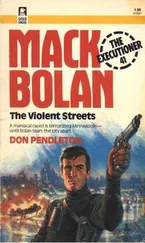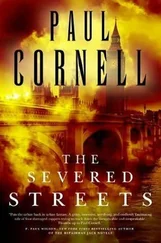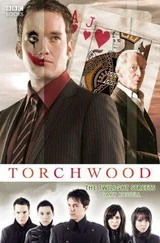“Sir?”
“I called you a piece of shit.”
Dave Brown looks up from the current issue of Rolling Stone and sighs. Donald Worden is on a tear, and nothing good can come from that.
“Gimme a quarter,” says Worden, palm open.
“Let me understand this,” says Brown. “I’m here at my desk reading a magazine-”
“One of them art school magazines,” Worden interjects.
Brown shakes his head wearily. Although his most recent creations have been limited to renderings of dead stickmen in his crime scene sketches, David John Brown is indeed the product of the Maryland Institute of Art. In Worden’s mind, this fact alone makes suspect his credentials as a homicide detective.
“Reading a magazine of rock ’n’ roll and popular culture,” Brown continues, “interfering with no one, and you walk through the door and address me as fecal matter.”
“Fecal matter. What the hell is that? I didn’t go to college. I’m just a poor dumb white boy from Hampden.”
Brown rolls his eyes.
“Gimme a quarter, bitch.”
This has been going on ever since Dave Brown arrived in homicide. Time and time again, Worden demands 25-cent pieces from younger detectives, then simply pockets the money. No trip to the Macke machines downstairs, no donation to the coffee fund-the money is taken as tribute, plain and simple. Brown digs in his pocket, then tosses a quarter at the older detective.
“What a piece of shit,” Worden repeats, catching the coin. “Why don’t you start handling some calls, Brown?”
“I just handled a murder.”
“Yeah?” says Worden, strutting over to Brown’s desk. “Well, handle this.”
The Big Man leans over Brown’s chair, his crotch even with the younger detective’s mouth. Brown screams in mock hysteria, bringing Terry McLarney into the room.
“Sergeant McLarney, sir,” shouts Brown, with Worden now almost on top of him. “Detective Worden is forcing me to engage in sexual acts prohibited by law. As my immediate supervisor, I appeal to your…”
McLarney smiles, salutes, then turns on his heel. “Carry on, men,” he says, walking back into the main office.
“Get off me, goddammit,” yells Brown, tiring of the joke. “Leave me alone, you polar-bear-looking bitch.”
“Oooooooo,” says Worden, backing off. “Now I know what you really think of me.”
Brown says nothing, trying hard to return to the magazine.
The Big Man won’t let him. “Piece… of…”
Brown glares at the older detective, his right hand making a furtive move toward a shoulder holster burdened by the long barrel.38. “Careful,” says Brown. “I brought the big gun today.”
Worden shakes his head, then walks to the coat rack, looking for his cigars. “What the hell are you doing with that magazine, Brown?” he says, lighting up. “Why aren’t you out there working on Rodney Tripps?”
Rodney Tripps. Dead drug dealer in the driver’s seat of his luxury car. No witnesses. No suspects. No physical evidence. What the hell was there to work on?
“You know, I’m not the only person around here with an open one,” says Brown, exasperated. “I see a couple names up there in red ink that belong to you.”
Worden says nothing, and for just a second Brown wishes he could take back the last two sentences. The office banter always has an edge, but every now and then the line gets crossed. Brown knows that for the first time in three years the Big Man is truly slumping, carrying two consecutive open cases; more important, the mayhem that is the Monroe Street investigation is dragging on interminably.
As a consequence, Worden spends his days shepherding two dozen witnesses into the grand jury room on the second floor of the Mitchell Courthouse, then waiting outside while Tim Doory, the lead prosecutor in the case, does his best to recreate the mysterious slaying of John Randolph Scott. Worden, too, has been called before the same panel, with several of the grand jurors asking pointed questions about the actions of the officers involved in the pursuit of Scott-particularly after those jurors listened to the Central District radio tape. And Worden has no answers; the case begins and ends with a young man’s body in a West Baltimore alley and a cast of Western and Central District officers, all claiming no knowledge of the event.
Not surprisingly, Worden’s only civilian witness-the man identified in newsprint as a potential suspect-has gone before the grand jury and refused to testify, invoking his Fifth Amendment right against self-incrimination. Sergeant Wiley, the officer who found the body and who would be made to explain his prior radio transmission canceling the suspect’s description, has not been called as a witness.
We call Wiley as a last resort, Doory explained to Worden at one point, because if he’s culpable, he’ll also take the Fifth. And at that point, the prosecutor argued, there are few options left: If we let him refuse to testify, he walks out of the grand jury room, leaving us with insufficient evidence for any kind of indictment. But if we offer him immunity to compel his testimony, then what? What if John Wiley, under a grant of immunity, tells us he shot that kid? Then, Doory explained, we’ve solved a crime we can’t prosecute.
Returning from the courthouse every weekday afternoon, Worden’s nights are spent in the rotation, handling shootings, suicides and, ultimately, fresh murders. And for the first time since his transfer to homicide, Worden has no answers for those either.
Given that his squad is built around Worden, even McLarney is a little unnerved by the trend. Every detective gets his share of unsolved cases, but for Worden, two consecutive open files simply don’t happen.
During a recent midnight shift, McLarney pointed to the red names on the board and announced: “One of those is going down,” adding, as much to hear himself say it as to convince anyone else, “Donald won’t stand for two in a row like that.”
The first case was a drug murder from Edmondson Avenue back in March, a street shooting in which the only potential witness was a fourteen-year-old runaway from a juvenile detention center. Whether the kid could be found and whether he would tell his story was uncertain. But the second murder, an argument up on Ellamont which escalated into the slaying of a thirty-year-old man-that one ordinarily should have been a dunker. Dwayne Dickerson had been shot once in the back of the head when he tried to intervene in a street dispute, and when everyone involved had been shipped downtown and interviewed, Worden was left with one depressing truth: No one seemed to know the shooter or, for that matter, what he was doing in Baltimore with a gun in his hand. By all accounts-and the witnesses were consistent-the shooter had nothing to do with the original argument.
McLarney may like to think that Worden isn’t capable of letting two murders stay red, but unless the phone rings on the Dickerson murder, there isn’t much left for an investigator to do but check other assault-by-shooting reports from the Southwest and hope something matches. Worden has told his sergeant just that, but McLarney heard instead the echo of Monroe Street. To his way of thinking, the department had used his best detective to go after other cops, and God knows that kind of thing has an effect on a man like Worden. For two months, McLarney has been trying to get his best detective away from the Scott murder, easing him back into the rotation. Get the man back on his horse with some fresh murders, McLarney figures. Get him back on the street and he’ll be the same.
But Worden is not the same. And when Brown lets slip the comment about the red names on the wall, Worden suddenly lapses into cold silence. The banter, the bitching, the locker room humor, give way to brooding.
Читать дальше












